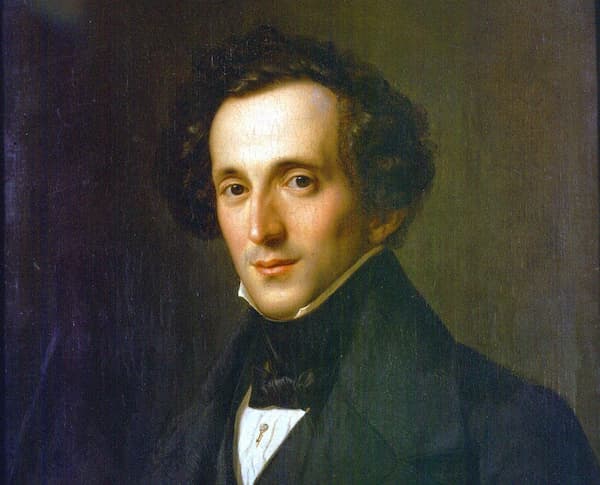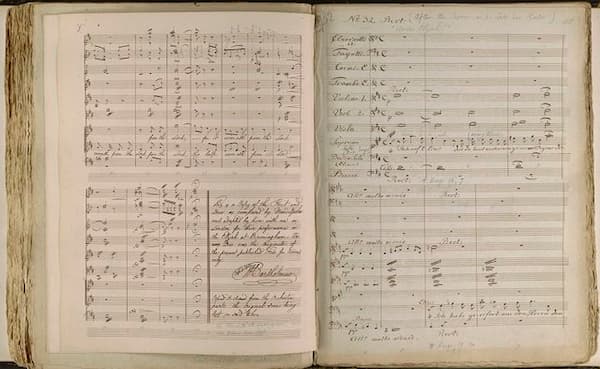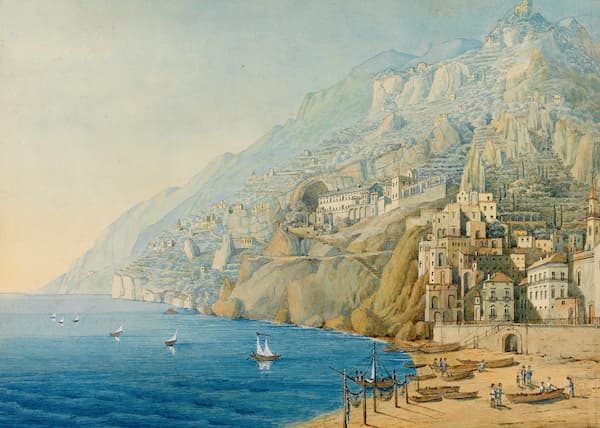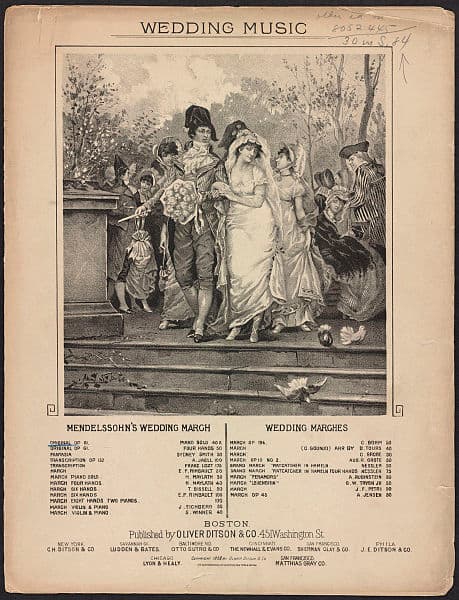by Hermione Lai, Interlude

Felix Mendelssohn
From the sweeping grandeur of his symphonies to the ethereal charm of his concertos, or the atmospheric depths of his incidental music, Mendelssohn’s compositions continue to captivate audiences worldwide.
To celebrate his birthday on 3 February, here are 10 of Mendelssohn’s most iconic pieces that will showcase his genius. Whether you’re a die-hard fan or a newcomer to his work, this blog brings you the essence of his musical magic.
Midsummer Night’s Dream “Overture”
Felix Mendelssohn: “Overture” to Midsummer Night’s Dream, Op. 21
Felix Mendelssohn twice composed music for William Shakespeare’s play A Midsummer Night’s Dream. And would you believe that he composed the immensely popular and famous concert “Overture” at the age of 17!

Edwin Landseer: Scene from A Midsummer Night’s Dream
The “Overture” is a vibrant and whimsical piece that captures the magic and mischief of Shakespeare’s play. Just listen to the magical opening that evokes the image of fairies flitting through a moonlit forest. There is also a noble fanfare and some truly playful chaos, representing the confusion and comedy of lovers and the mischievous antics of Puck.
Mendelssohn provides a dreamlike conclusion, with the music returning to the ethereal and enchanting melody from the beginning. The “Overture” is a musical journey through the forest of enchantment, sparkling with clarity, lightness, and pure joy.
Violin Concerto
Felix Mendelssohn: Violin Concerto in E minor, Op. 64
Are you ready for the ultimate Instagrammable musical joyride? If so, the Violin Concerto by Felix Mendelssohn is your ticket to one of the most famous musical joyrides in classical music.
What a wonderful musical gem that sparkles with youthful energy. It all starts with a thrilling burst of notes, like fireworks lighting up the sky. The orchestra and violinist seem to be playing a delightful game of cat and mouse. The music then softens into a serene and dreamy interlude, with the violin singing an intimate melody that paints images of calmness.
The final movement is like the best party you’ve ever been to. It’s all about joy, with the violin leading a vibrant dance. It is full of life and laughter and lets you forget your worries for a little while.
Piano Trio No. 1
Felix Mendelssohn: Piano Trio in D minor No.1, Op. 49
The Mendelssohn Piano Trio No. 1 is one of the most popular chamber compositions. When Robert Schumann first heard the piece, he wrote, “Mendelssohn is the Mozart of the 19th century.”
The piano immediately sets the stage for a sweeping melody in the cello, quickly joined by the violin. That opening movement switches back and forth between vibrant energy and quiet longing, a continuous emotional flow.
A “Song without Words” is followed by a “Scherzo” that reminds us of the airy passages in the Midsummer Night’s Overture. The initial piano theme of the finale keeps returning, and two expressive cantabile sections add a touch of introspection.
Songs Without Words
Felix Mendelssohn: Songs Without Words, Op. 19, No. 1
Mendelssohn’s Lieder ohne Worte (Songs Without Words) are like bubbles of musical joy, floating through time with an effervescent charm. And did you know that Mendelssohn actually invented this genre of “wordless songs.”
These pieces are incredibly popular as they delicately balance simplicity and sophistication. Although there are no lyrics, each piece tells a story or invites the listeners to create their own narrative.
Just listen to the beautiful flowing melodic lines with a hint of virtuosity. These pieces speak directly to the heart, conveying universal human experiences and emotions. And they are accessible even to amateur pianists.
Elijah
Felix Mendelssohn: Elijah, “He, Watching over Israel”
The oratorio Elijah is not simply a musical experience, it is also a spiritual one. Incredibly popular with singers and audiences, it offers beauty, drama, and devotion.

Manuscript of Mendelssohn’s Elijah
Elijah is based on the biblical story from the Books of Kings concerning the prophet Elijah. It is a dramatic portrayal of his life, focusing on his miracles, his challenge to the priests of Baal, his confrontation with Queen Jezebel, and his ascension to heaven.
“He, Watching over Israel” is one of the most beloved choruses, as it is inherently calming and serene. Intended to provide solace, the music gently rises and falls to invoke the idea of an ever-watchful and loving guardian.
Italian Symphony
Felix Mendelssohn: Symphony No. 4 in A Major, Op. 90 “Italian”
Felix Mendelssohn’s “Italian” Symphony is a wonderful auditory postcard from Italy. This incredibly popular work captures the vibrant spirit and scenic beauty Mendelssohn experienced during his trip to the land of music.

Mendelssohn’s painting of the Amalfi Coast
Blending dance-like rhythms with soaring melodies, the first movement bursts with excitement. It is like strolling through a lively Italian town. The lyrical and serene second movement evokes the calm of the countryside, and the third sounds a serenade in the moonlight.
The Final Celebration unleashes a whirlwind of notes that imitates the joyous dances in the streets of Rome or Naples. This symphony has it all: the warmth of the Italian sun, gorgeous melodies, and plenty of dance rhythms.
Octet
Felix Mendelssohn: Octet in E-flat Major, Op. 20
It’s almost unbelievable, but Mendelssohn wrote his first chamber masterpiece at the age of 16! The Octet channels all the exuberance, creativity, and passion of youth into an incredible piece of music.
Mendelssohn weaves together eight instruments in a display of youthful energy and brilliance. It’s like a roller coaster of emotions and sounds that feel modern and timeless all at once.
The Octet is pure sparkling creativity! And while we are captivated by the energetic outer movements, it also contains moments of profound beauty in the slow movement. It’s an unbelievable range of emotions from a composer that young.
Piano Concerto No. 1
Felix Mendelssohn: Piano Concerto No. 1 in G minor, Op. 25
At the age of 22, Mendelssohn fell in love with Delphine von Schauroth. They played lots of piano duets together, and his first Piano Concerto was the result of his infatuation.
It seems that Delphine composed an important passage for this work, but we really don’t know which one. Could it be the melancholy theme from the opening movement that returns in the final movement and provides the musical and emotional bond for the work?
We may never know for sure, but the relationship did not last. Mendelssohn eventually married Cécile Jeanrenaud, and Delphine wedded in succession the English clergyman Edwin Hill-Handley, Stephan Freiherr Henning von Eberg and Edward Knight.
Hebrides Overture
Felix Mendelssohn: The Hebrides, Op. 26 “Fingal’s Cave”
The Hebrides Overture, also known as “Fingal’s Cave”, is a musical postcard from one of nature’s most dramatic spectacles. Mendelssohn visited Scotland and the Cave in 1829, and it inspired one of his most popular works.
This musical painting is less about melody and more about evoking the rugged atmosphere of the Hebrides. Just listen as the cellos and basses mimic the deep swells of the ocean, setting a majestic and mysterious scene.
It’s actually a story without words, where the music itself is the narrative, depicting the cave, the sea, and the rugged Scottish coastline. In the woodwinds you can actually hear the almost supernatural echo from inside the cave.
Wedding March
I’ve left the most popular selection for last. Mendelssohn’s “Wedding March” is one of the most famous pieces of classical music. It originates in the play “A Midsummer Night’s Dream” and accompanies the wedding scene of Theseus and Hippolyta.
The reason it’s become one of the most popular pieces by Mendelssohn actually has to do with a specific wedding. In 1858, Princess Victoria, Queen Victoria’s daughter, used it for her wedding recessional, and it has since become a staple in wedding traditions around the world.

Sheet music for Mendelssohn’s wedding march
It really encapsulates the very essence of romance and joy. The melody is pure and uplifting, and it seems to carry the weight of happiness and the promise of a blissful future. Mendelssohn wrote the music for a specific scene, but it transcended its original context to become a symbol of matrimonial joy and celebration.
Mendelssohn’s music, featuring classical elegance and romantic passion, continues to captivate audiences worldwide. With plenty of melodic richness and profound emotional depth, his music maintains enduring popularity for its ability to convey joy, beauty, and a timeless sense of celebration.
No comments:
Post a Comment